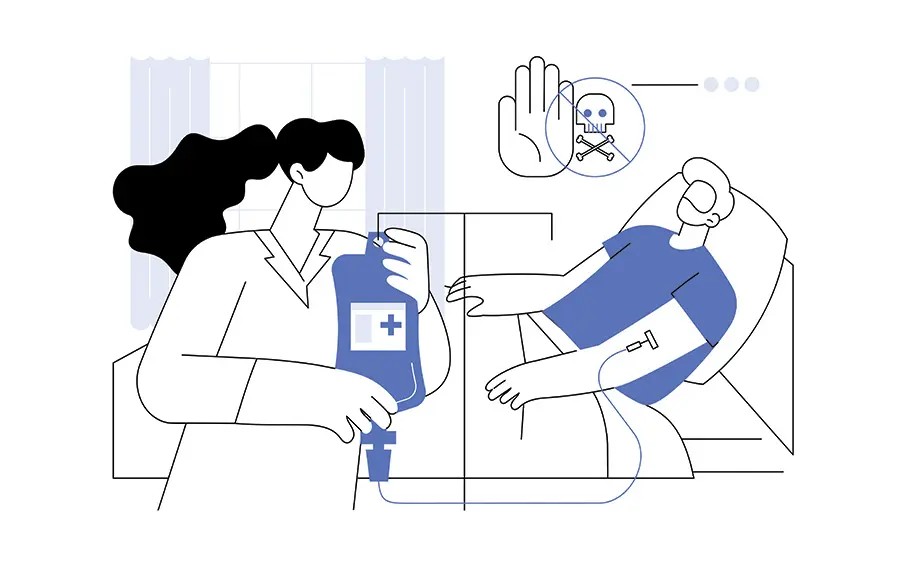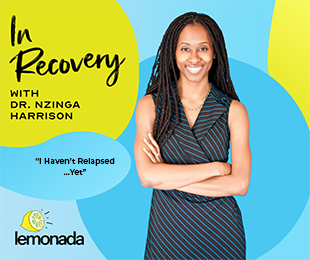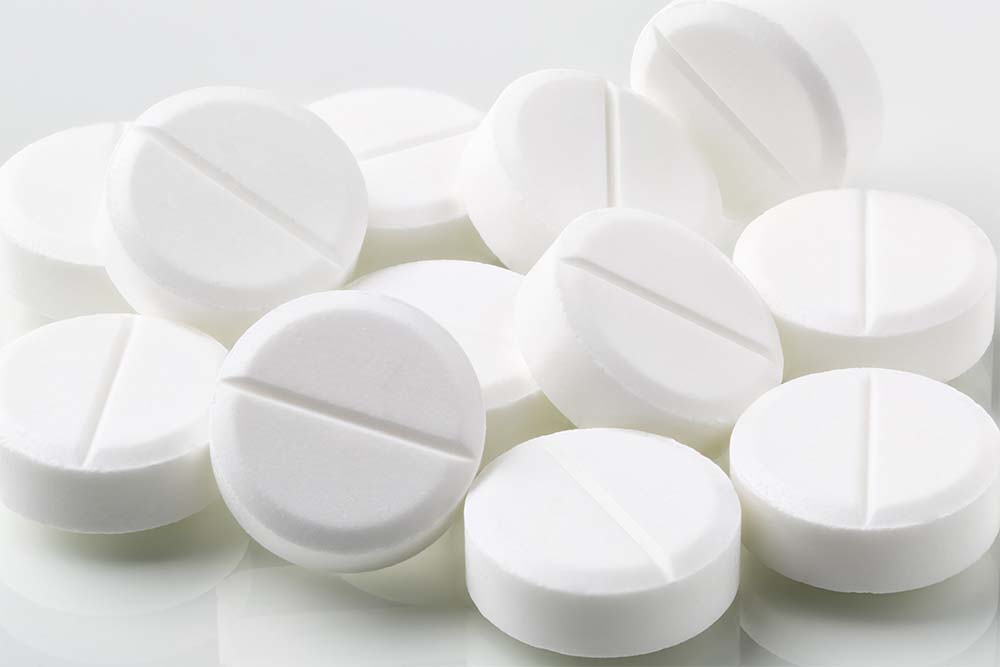The opioid crisis has remained an issue of concern in the nation in recent years and data shows that deaths from drug overdose have increased significantly. In 2021, the overdose-related deaths were six times the number reported two decades earlier. Sadly, opioids (prescription and non prescribed, or illicit) accounted for more than 75% of the over 100,000 overdose deaths in 2021.
According to the CDC, there have been three waves of opioid overdose deaths. The first wave started in the 1990s, marked by an increase in prescription opioid overdose deaths. In 2010, the second wave kicked in as heroin overdose-related deaths rose due to many having to convert to heroin use after becoming dependent on prescription opioids. This was followed by the third wave in 2013 as deaths involving overdose of synthetic opioids increased due to the heroin supply being laced with stronger opioids such as fentanyl.
When not done safely, opioid detox can present life-threatening withdrawal symptoms. Medical detox is one of the safest ways of detoxing as it provides a drug-free environment and close medical supervision and support.
Opioids are substances that are prescribed to manage severe pain. Opioids work by attaching themselves to opioid receptors in the nerve cells located in the spinal cord, brain, and other parts of the body to block pain signals. Opioids can also lead to euphoric effects. Both prescription and illicit opioid use have the potential to lead to addiction, or an opioid use disorder.
Commonly misused opioids include codeine, hydrocodone, methadone, morphine, oxycodone, heroin, and fentanyl.
While opioids help with pain management, especially when a person is experiencing severe pain, prolonged use creates physical dependence and tolerance, leading to increased use, larger dosages being required, and higher risks for overdosing.
The risk for developing an opioid use disorder varies from person to person. Some people are more likely to become addicted than others depending on factors such as genetics, psychological factors, environmental influences, and drug tolerance.
Once a person develops an opioid use disorder, it’s important to seek professional help for a supervised and safe detox process. Each individual may have unique challenges, depending on their severity of addiction, physical dependence on the substance, and psychological factors. With supervised detox, you get a personalized care plan and the therapeutic support you need to safely stop using opioids.
Withdrawal is a common reason many struggle to stop using opioids. Once you stop using opioids, you’re likely to experience unpleasant effects as the body adjusts. Common withdrawal symptoms include:
How long withdrawal/detox lasts depends on various factors, including the type of opioid you’ve been using, the frequency of use, duration of use, and the amount used. Withdrawal for a short-acting opioid may last for 4 to 10 days, while a long-acting opioid can take 10 to 20 days.
For many, these symptoms can be so extreme that relapsing is the only way to feel relief. Thus, it is important to find the most appropriate detox method that will help with safely getting through the withdrawal syndrome without relapsing. To measure the severity of symptoms, you can use the Subjective Opiate Withdrawal Scale (SOWS).
There are multiple routes to choose to safely stop using opioids. Picking the best option for the severity of the withdrawal syndrome and supports needed are imperative to a successful recovery.
There are two types of medical detox; inpatient and outpatient. Outpatient treatment includes working with a professional on transitioning off opioids, often using medications to reduce withdrawal symptoms and prevent cravings. In addition to that, inpatient treatment includes relocating to another setting away from the substance and having medical providers available around the clock for assessment and medication prescribing.
Medications for addiction treatment (MAT) can be extremely helpful for getting through detox and maintaining long term recovery, and people who choose treatment that includes medication have higher success rates. The main medications used for treating symptoms of opioid withdrawal include:
Additionally, other medications can be prescribed to help manage withdrawal symptoms including medications that help with restlessness, sweating, body aches, diarrhea, nausea/vomiting, stomach spasms, anxiety and sleep.
Pros of MAT
Cons of MAT
Medications for addiction treatment can also be used beyond detox for craving and withdrawal management as evidence shows long term use further reduces the risk for relapse. To learn more about these medications, read this guide.
There are multiple strategies you can use to set yourself up for the best success with getting through withdrawal in addition to medications.
To start, tapering the amount used of the opioid each day can help lessen the severity of withdrawal symptoms. Additionally, creating a safe, comfortable environment without triggers that remind you of using, access to the opioid, and support nearby is key to a successful detox.
Overall, nutrition and self-care are crucial for managing withdrawal symptoms. Eating a balanced diet helps replenish the nutrients and lessen the severity of nausea and diarrhea symptoms. Self-care tactics can include relaxation techniques, like taking a bath or eating some chocolate, exercising, which can improve your mood, anxiety and sleep, or even distracting yourself, such as binge watching your favorite comfort TV show.
Herbal and alternative remedies, such as acupuncture and Chinese herbal medicine, may also reduce withdrawal symptoms. Yoga, mindfulness, massage therapy, and aromatherapy have shown benefits as well.
While detoxing on your own may seem like a good idea, it’s not recommended. Involving professional help is advised, and inpatient medical detox is necessary if symptoms are severe or if there are additional medical issues. Serious complications like dehydration due to untreated vomiting and diarrhea, aspiration pneumonia, or heart failure could also arise while detoxing from opioids, so it is imperative to seek medical assistance if symptoms are unmanageable.
Additionally, inpatient detox may be necessary for those who struggle with outpatient detox and those without a safe space to detox due to easy access to opioids or lack of support.
Creating a post-detox plan is essential for successful recovery. There’s always a potential for relapse, and a plan helps prevent that. You should always be on the lookout for triggers that historically contribute to your relapses and proactively address them. Other equally important components to consider in your post-detox plan are:
Getting set up with therapy, peer counseling or a support group can help prevent relapse and help you get through any remaining post-acute withdrawal symptoms.
To note, there’s a high risk of overdosing following a relapse after a period of abstinence and it is imperative that anyone struggling with an opioid use disorder should have Narcan on hand with another person in the home who knows how to use it.
Support plays a pivotal role in successful recovery from opioid use disorder. Detoxing triggers many unpleasant withdrawal symptoms and behaviors, which can be difficult to witness for loved ones. Nonetheless, individuals struggling with withdrawal need support and understanding to pull through the recovery journey and regain their life. Some of the ways you can support them include:
Detoxing from opioids requires a comprehensive treatment approach for successful recovery. While there are holistic methods for opioid detox that users can try at home, these should never be used as an alternative to meeting with a professional. Close medical supervision is vital to effectively manage withdrawal symptoms and minimize the potential risks of relapse and fatal overdose. Usually, recovery is not one size fits all; it requires a personalized care plan, factoring in each person’s unique needs and goals.
At Eleanor Health, we provide comprehensive addiction treatment, which involves medication for addiction treatment, therapy, and peer support. If you or a loved one needs confidential and convenient treatment for opioid addiction, contact us today, and let’s get started on your journey.
 What is Medical Detox?
What is Medical Detox?
 I Haven’t Relapsed…Yet [Podcast]
I Haven’t Relapsed…Yet [Podcast]
 Private: Disulfiram for Alcohol Addiction Treatment
Private: Disulfiram for Alcohol Addiction Treatment